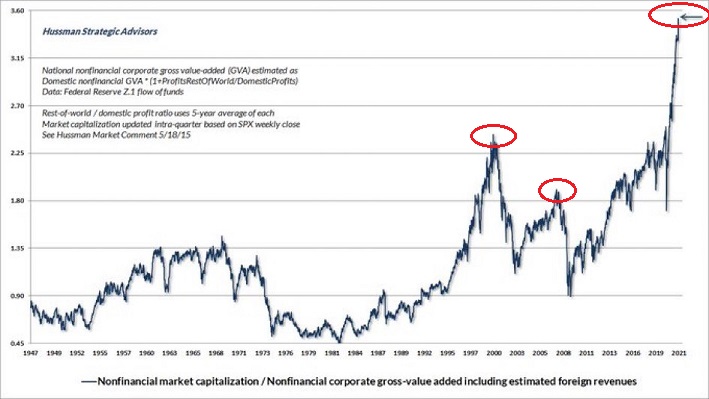The central bank of the United States, the Federal Reserve, exists as an economic savior and as a financial persecutor. As a rescuer, it successfully bailed out the economy during the coronavirus shutdowns by creating trillions in digital dollar liquidity.
(See the green box in the chart below.)
Stocks recovered quickly from the March 2020 crash. Home prices maintained values; they even began climbing alongside lower interest rates.
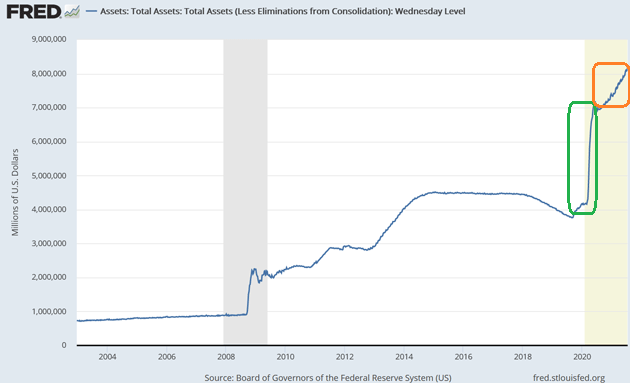
Then something sinister happened. In their infinite wisdom, members of the Federal Reserve Open Market Committee (FOMC) decided to continue money-printing activity indefinitely.
(See the orange box above.)
Now stocks and residences continue to hit all-time records with virtually no connection to underlying fundamentals. The Fed simply crams $120 billion each and every month into an economy that does not need it, and the money looks for returns in every asset under the sun.
Stocks, bonds, real estate, collectibles—you name it. The Fed has created a monster with its Every Asset Bubble.
Consider how desperate investors are becoming. Never-before-seen inflows into stock ETFs are a sign that investors believe they’re in a can’t-lose proposition.
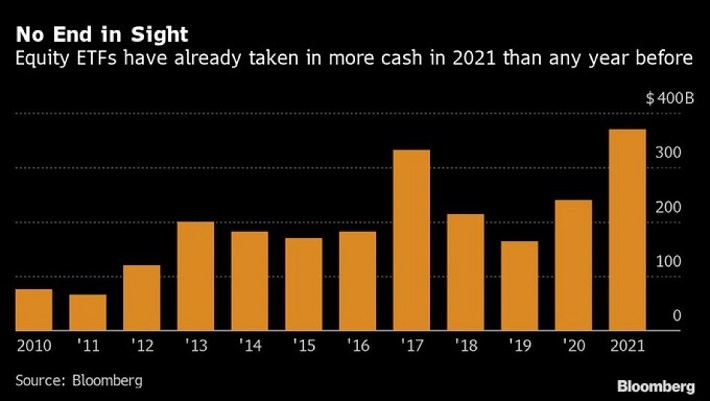
Meanwhile, bond investors have become utterly desperate for yield. So much so that they are willing to risk losing all of their principal for the privilege of owning corporate bonds with ratings a single notch above default. Would you do that for a 7% yield?
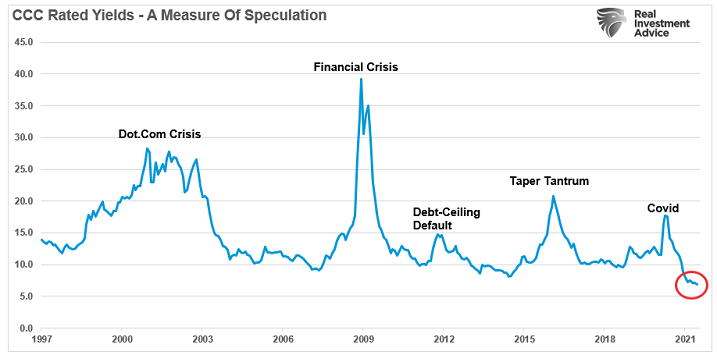
And in nearly every metro area, you get home price charts that look a little something like this:
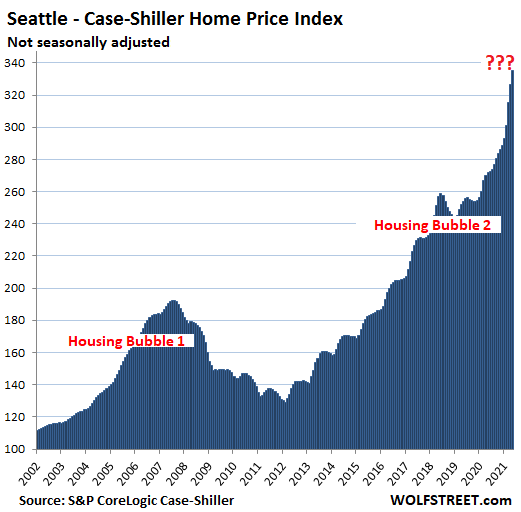
Indeed, the Fed has forged a monstrous environment. For one thing, investors are being misled by a notion that money creation and rate manipulation can always succeed at propping up financial assets. However, if an overwhelming number of participants prefer a 0% return for a period, rather than lose their shirts, trillions more in money-creating liquidity may fail when the bubble bursts.
For another, the Fed has painted itself into a corner. Waiting to pull back from gobs of stimulus may require a brake-slamming occurrence that investors will struggle to manage. Even modest efforts to pull back from gobs of stimulus today could send participants barreling for the exits.
And so what will the Fed do? Almost certainly, it will ignore inflation. Call it transitory. And continue printing each and every time that the owners of assets get scared.
The Fed does not care about the widening gap between those with assets and those without them. They’d rather pay lip service to wealth inequality. And while committee members may be mindful of the frothy particulars, they’re not willing to alter their course.
In the meantime, things get bubblier by the minute. The valuation premium for owning the largest companies (a la tech) versus owning smaller companies is eerily similar to the turn-of-the-century tech stock bubble.
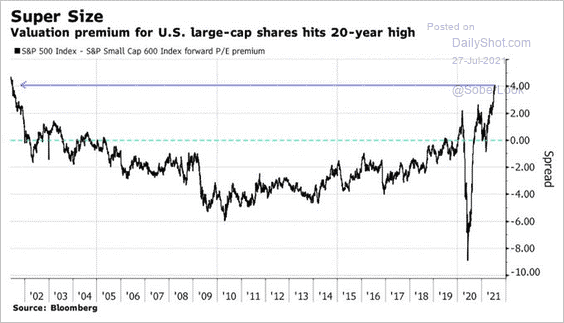
And then there’s a modified version of the Warren Buffett metric, market-cap-to-GDP. (In this instance, it is market-cap-to “gross value added.”) The extent of the overvaluation? Mind-blowing.
